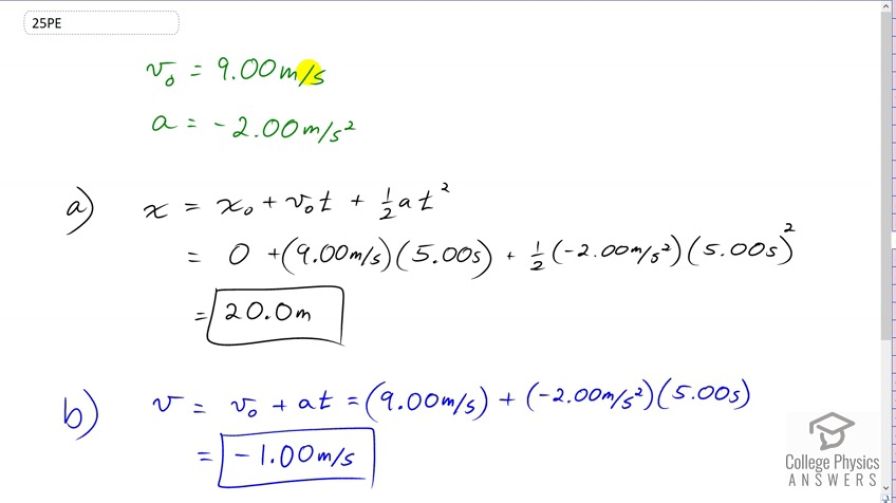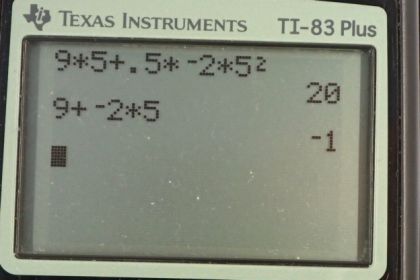Question
At the end of a race, a runner decelerates from a velocity of 9.00 m/s at a rate of . (a) How far does she travel in the next 5.00 s? (b) What is her final velocity? (c) Evaluate the result. Does it make sense?
Final Answer
a)
b)
c) Sort of... It means the runner turned around after crossing the finish line and is now returning back to the finish line. See video for discussion.
Solution video
OpenStax College Physics for AP® Courses, Chapter 2, Problem 25 (Problems & Exercises)

vote with a rating of
votes with an average rating of
.
Calculator Screenshots
Video Transcript
This is College Physics Answers with Shaun Dychko We begin the question by writing down the information we're given. This runner has an initial velocity of 9.00 meters per second when they finish the race. And then, they decelerate at 2.0 meters per second squared. And this is negative acceleration because it's opposing the velocity. And so, the runner is slowing down. Now, how far does she go in the 5 second period after crossing the finish line? We use this displacement formula. It's the initial position plus the initial speed times time plus one-half times acceleration times time squared. So, the initial position will tend to be the finish line and that's zero. And that's then plus 9 meters per second times 5 seconds plus one-half times negative 2 meters per second squared times 5 seconds squared. And that gives a final position of 20.0 meters beyond on the finish line. It's where she'll be at 5 seconds. Her velocity at that point is a bit confusing. We have the velocity formula as initial velocity plus acceleration times time. And so, the initial velocity is 9.0 meters second plus negative 2 meters per second squared times 5 seconds. And that gives negative 1.00 meters per second. The negative is a bit surprising. So, the answer in part C is that this doesn't really make sense, although it kind of does. It doesn't really matter. But, what it means is that the runner crossed the finish line that, let's say it's here. She ran for maybe 4.5 seconds or so and then stopped and then turned around and started running backwards. And then this is where she is at 5 seconds. And that is... That is 20.0 meters past the finish line. It's here. But, she has actually traveled a distance traveled of more than 20 meters. It's just her displacement with respect to the finish line is 20 meters. And at this point, she is traveling this direction, in the negative direction with a velocity of negative 1.0 meters per second.
